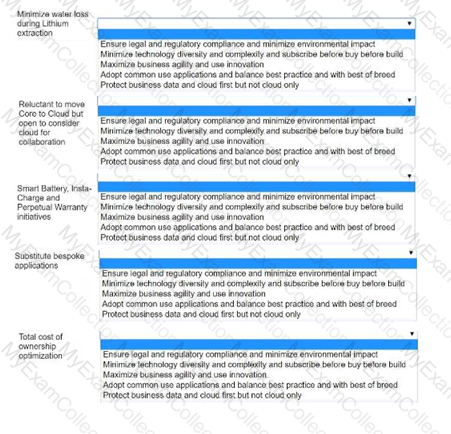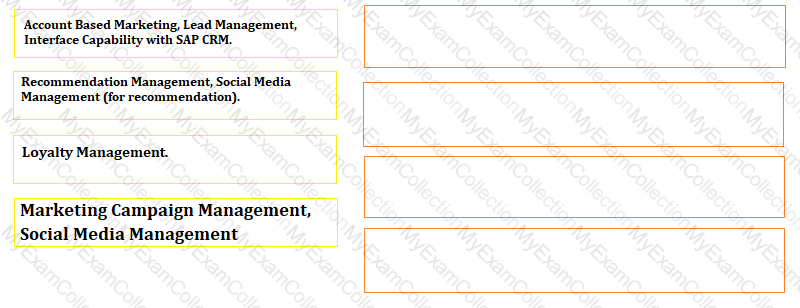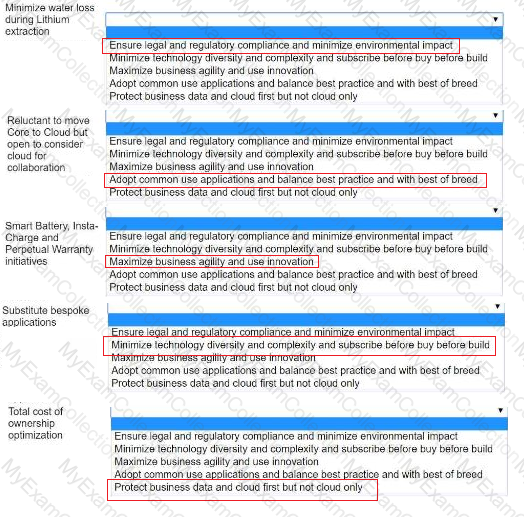Green Elk & Company is the world's leading manufacturer of agricultural and forestry machinery. The former company slogan "Eik always runs has recently been changed to "Eik feeds the world" One of Green Elk's strategic goals is to increase its revenue in the emerging markets of China, India, and other parts of Asia by 80 % within three years. This requires a new business model that caters to significantly smaller farms with limited budgets You are the Chief Enterprise Architect and the decision was taken to implement regional S/4HANA productive systems while ensuring a high degree of standardization. Which of the following implementation approach would you consider best in this case?
Green Elk & Company is the world's leading manufacturer of agricultural and forestry machinery. The former company slogan "Elk always runs has recently been changed to "Elk feeds the world". One of Green Elk's strategic goals is to increase its revenue in the emerging markets of China, India, and other parts of Asia by 80% within three years. This requires a new business model that caters to significantly smaller farms with limited budgets. The CIO asks you, the Chief Enterprise Architect, to present an Architecture Roadmap that addresses the business challenge. According to the SAP Enterprise Architecture Framework, what is the best answer?
As the Chief Enterprise Architect of Wanderlust GmbH, you are aware that EA principles should correlate to the Business and IT Strategic Objectives and decisions. In the list given below, the left column has some Wanderlust Business/IT objectives and decisions and the right column has some EA principles. Which objectives and decisions correlate best to which principle?

As the Chief Enterprise Architect of your company you have been asked by the CIO to apply agile principles instead of following the sequential phases of TOGAFS ADM. How do you respond?
As Chief Enterprise Architect of Wanderlust GmbH, you have just finished documenting the business ecosystem around online marketing. The CEO is asking for a suitable artifact to rejuvenate online marketing with a set of employees and partners. What would you do to be ready with the right information in this situation?
The CIO of Wanderlust strongly feels that the seldom-used legacy Marketing application cannot be the platform to rejuvenate their online marketing business. As Chief Enterprise Architect, the CIO has entrusted you with the responsibility of finding a suitable replacement that can support all current processes and also address the issues plaguing the existing application. Which of the following should you do to conclusively shortlist possible applications to replace the existing one? Note: There are 2 correct answers to this question.
The online marketing channel is targeted only to individual customers, who should be able to choose any of the 50 combinations that Wanderlust offers for its electric cars. Every confirmed online order must be first checked for ready stock availability and, if unavailable, must go for production scheduling. As Chief Enterprise Architect of Wanderlust, along with the SAP Enterprise Architect, you have identified Lead to Cash (L2C) as the key E2E process. However, you have found out that the SAP Reference Business Architecture content has several Business Process Variants of the L2C process, from which you are supposed to choose one suitable variant for Wanderlust's product range and business model. Which of the following combinations of L2C Business Process Variants and business reasons are the most suitable? Note: There are 2 correct answers to this question.
Select the most appropriate sequence of critical Business Capabilities for the Business Architecture Roadmap.

While discussing the Smart Battery initiative in greater detail with the appropriate stakeholder, as Chief Enterprise Architect of Wanderlust, you discover that several key areas such as value proposition, cost structure, revenue streams, partners, and channels have been worked upon in isolation and therefore do not tally with each other. Which artifact would you recommend to bring all the above key dimensions together in a single window, to have a unified, consistent, holistic view of the Smart Battery initiative?
Wanderlust's numbers for order booking have been on a free-fall, ever since a recent economic downturn reduced showroom footfall to near zero. To counter the drop in in-person bookings, the CEO and CIO have been looking to revive their online channel, which was started six years ago. However, this channel was seldom used before the pandemic, which has led to a complete breakdown of Wanderlust's online marketing business ecosystem. Also of major concern, is their existing Non-SAP Marketing application, which lays unused due to poor integration with SAP CRM. As Chief Enterprise Architect, you have been approached by the CEO to document the online marketing business ecosystem first. Which of the following actions would you do to meet your CEO's request? Note: There are 2 correct answers to this question
Why is it useful to create Transition Architectures in the Application Architecture domain?

 EA principles are the foundational statements that guide the prioritization and execution of initiatives in alignment with business and IT strategic objectives. Each of the objectives and decisions on the left should align with the principle that best supports it.
EA principles are the foundational statements that guide the prioritization and execution of initiatives in alignment with business and IT strategic objectives. Each of the objectives and decisions on the left should align with the principle that best supports it.

